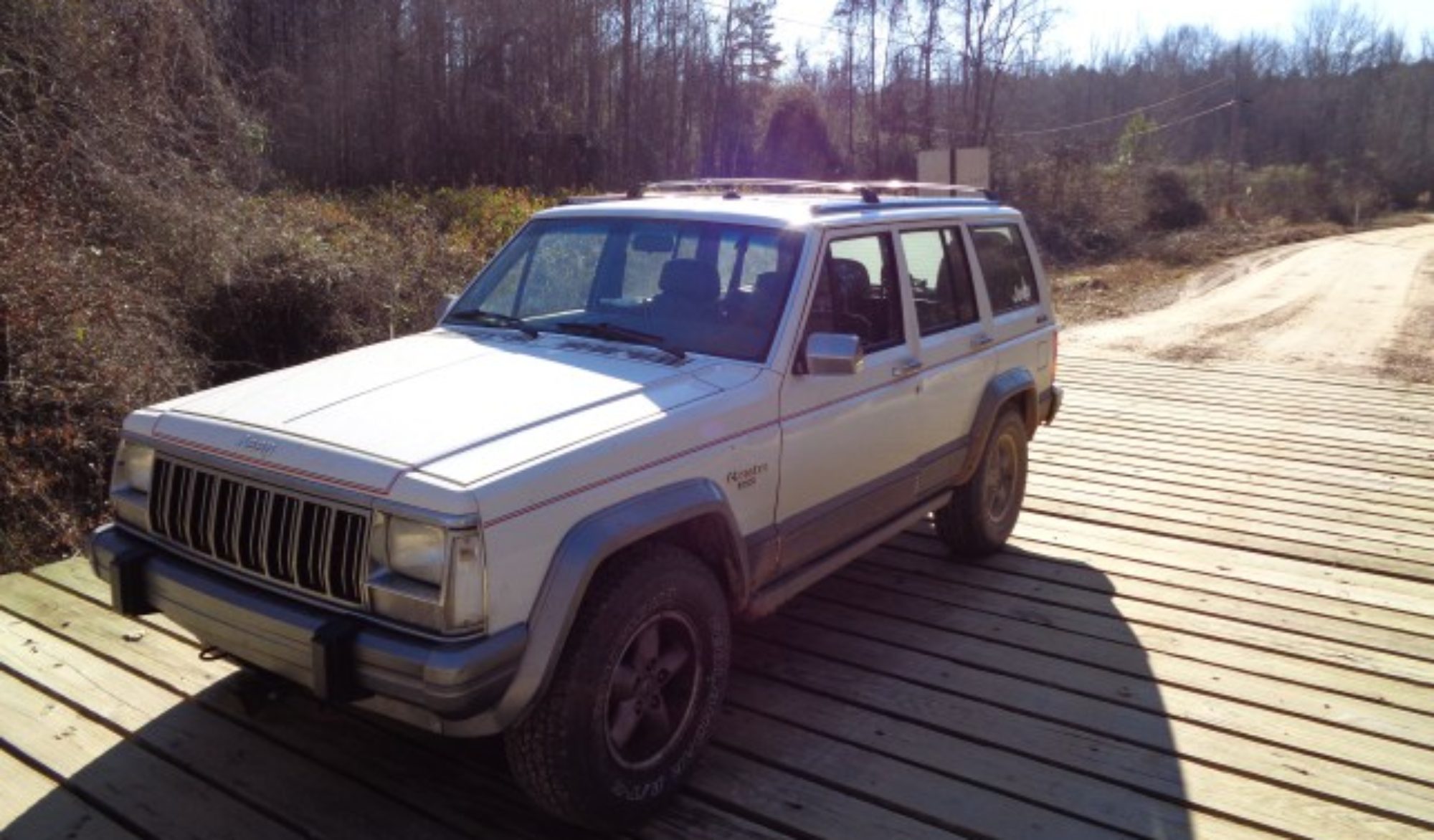Repairing an Axle Joint on a Jeep Cherokee
Last week I decided to repair the U joint in the right front axle of my Jeep Cherokee. I had noticed some rust stains around the grease seal a while back indicating that it had lost its lubrication. I recently noticed that the joint had some slop in it. Before leaving on a trip, I decided to replace the joint so it would not fail on me on the road.
I picked up a new U joint from the parts store on the way home. I picked up my Cherokee and removed the wheel. I then removed the brake caliper and rotor. Next I removed the 36 mm nut on the end of the axle. I then removed the three 12 point 13mm bolts from the hub.
AS usual the hub was stuck in the knuckle. I used my three sacrificial bolts to remove it. I threaded in the bolts a few turns into the hub and used a hammer to strike the bolts heads. These bolts have been used several times for this task and the heads are quite beat up now. Once the hub separated from the knuckle, I removed the bolts and pulled the hub and brake shield off. I then slipped the axle shaft out of the housing.
I carried the shaft to my vise and used my U joint press to remove the worn joint. The C clips were rusted in place. I had to soak the assembly with PB Blaster and use several strikes of the hammer on my specially ground chisel to get them to pop loose.
When using the press to remove a U joint, I have found the best success by tightening the press and then striking the press bolt with a hammer. The hammer does most of the work. Trying to tighten the bolt in the press enough to move a stubborn U joint has very poor results. I have much better success with the tighten-and-strike method.
One the U joint was out and I confirmed that one of the caps was totally destroyed by rust and wear; I opened the box for the new U joint. That is when I realized I had purchased the wrong U joint. I had forgotten that some years ago I had updated the front axle in this Jeep to a 99 axle which uses larger U joints than the 1991 originally came with.
Since it was well after closing time for the parts store and I had a trip to make the next day, I set about finding a temporary solution. I considered pulling a shaft from my off road XJ. I considered swapping in a couple of two wheel drive stub shafts.
I looked around and found a CV shaft in a pars Jeep behind the barn. The Jeep is a 1985 XJ but has ZJ axle shafts in it. Both of these Jeeps use a Dana 30 with CV axles.
I hammered the hub out and carried it to the shop to separate the bearing from the axle shaft. I inspected the boot. It felt stiff but there were no tears or holes. I slipped it into place and put my hub back on. Setting the bearing preload was a bit of a challenge with the CV axle. I normally just slide a bar through the axle yoke and use the torque wrench on the nut. Since there is no yoke on the CV shaft, I had to use the bar through the wheel studs. Having to pull two bars to 150 foot pounds was a bit of a challenge but I eventually felt the click in the torque wrench.
I then put the rest of the wheel assembly back and took it for a test drive. It felt nice and smooth.
After my trip, I picked up the proper U joint for this axle shaft. I used my anvil and a hammer to drive in the new joint. It went in easily.
I then pulled the hub off to remove the CV shaft. I noticed that there was grease on the brake caliper and on the inside of the axle housing. I rotated the shaft around and found a gaping hole in the boot. I also found a small twig in the grease. I guess the little piece of wood cut the boot or maybe it just failed due to age. Either way, I am glad I already had a replacement made up.
I slipped the axle shaft back in the housing. When I went to slip the hub back on, it did not slip freely on to the splines. Upon very careful inspection I found where the splines on the ale shaft had been slightly damaged while it was out; possibly during the U joint removal process. I used a three sided file to clean up the burrs until the hub slipped on easily.
I then bolted the hub in place and set the bearing preload to 150 foot pounds. This time I used a bar through the axle yoke being careful not to damage the U joint seals. I then reassembled the brakes and reinstalled the wheel. A test drive showed the new joint to be just as smooth as the CV shaft.
See the next article for how to choose the proper U joint for the axle shaft of an XJ.












